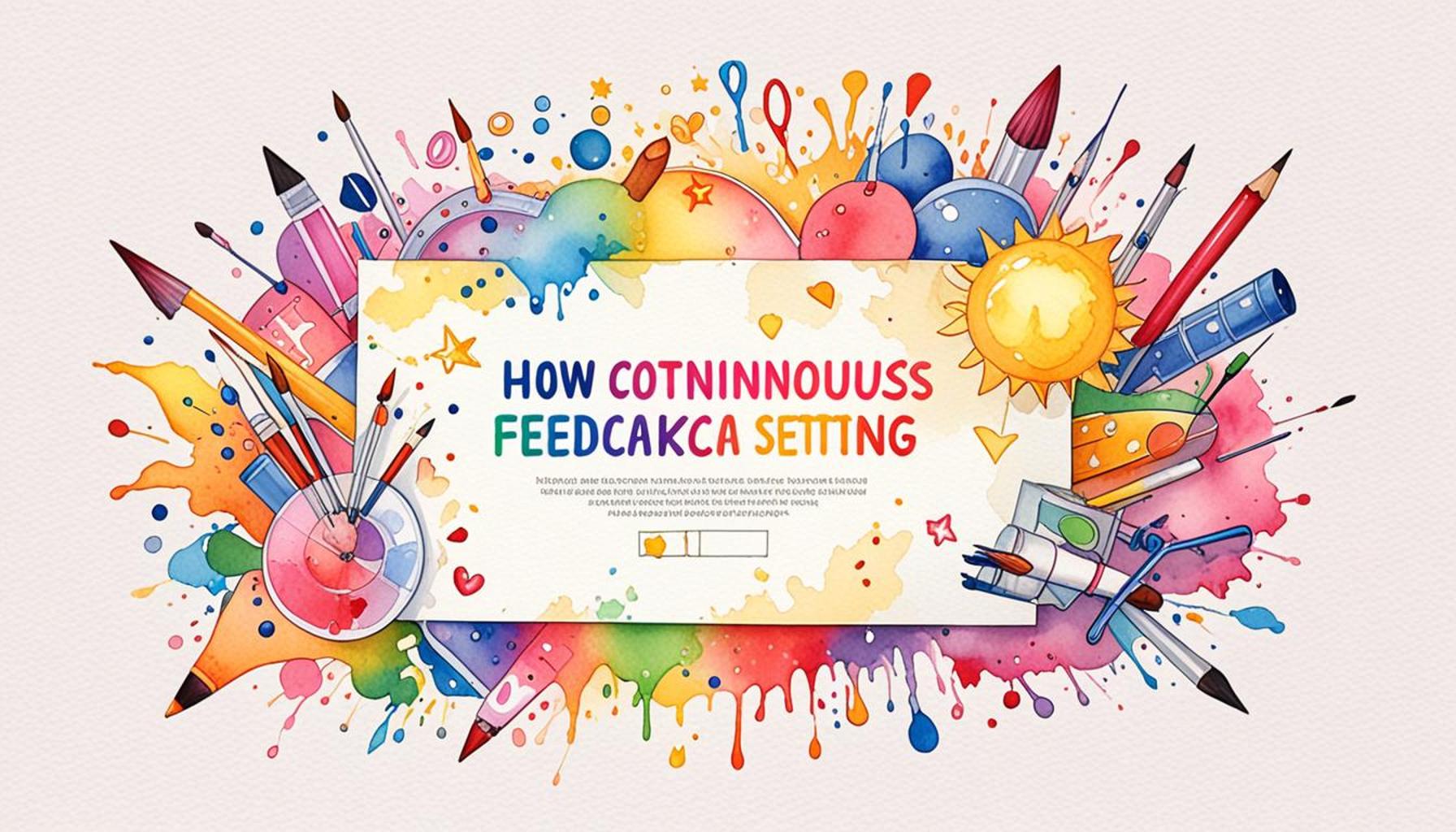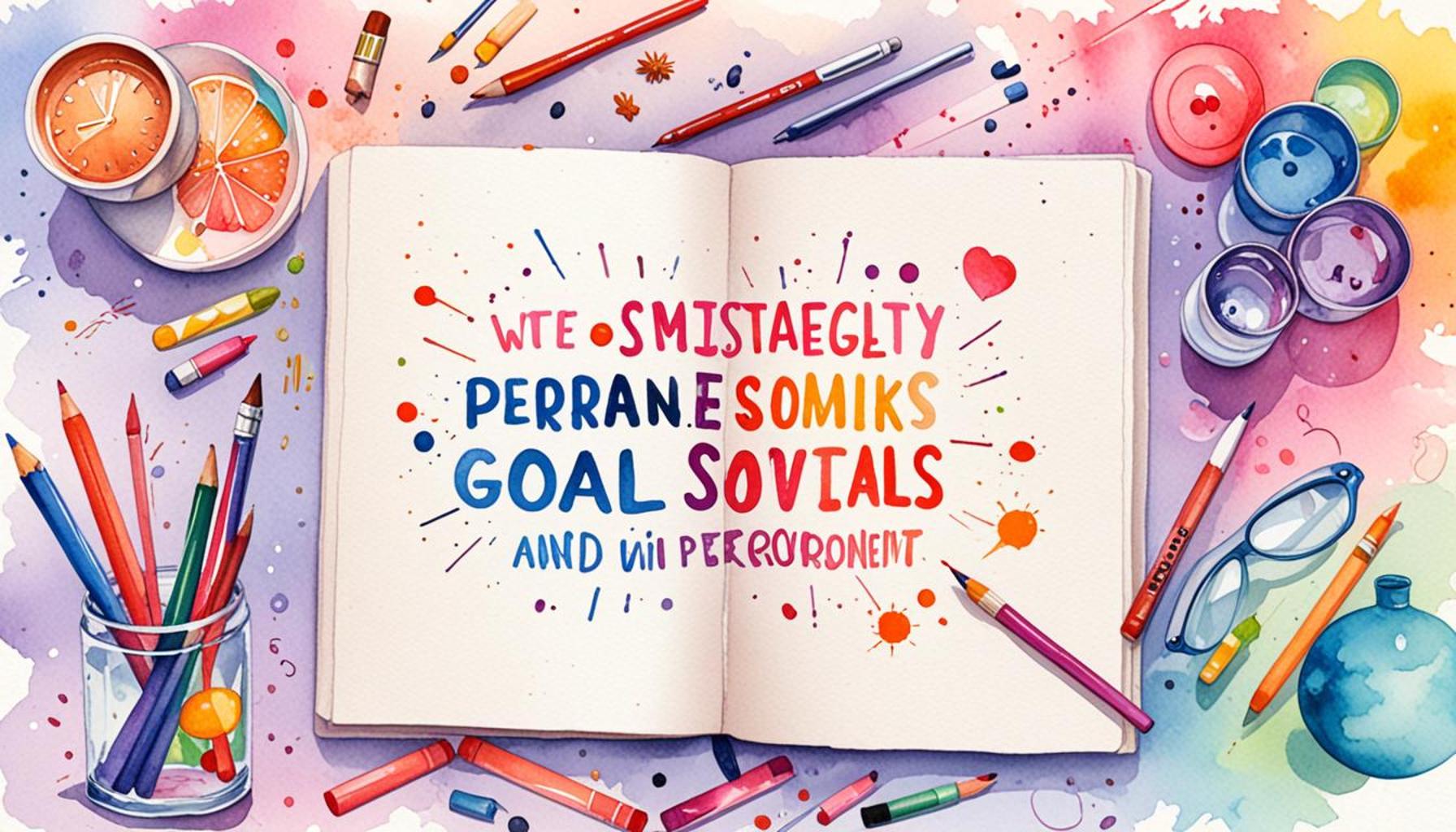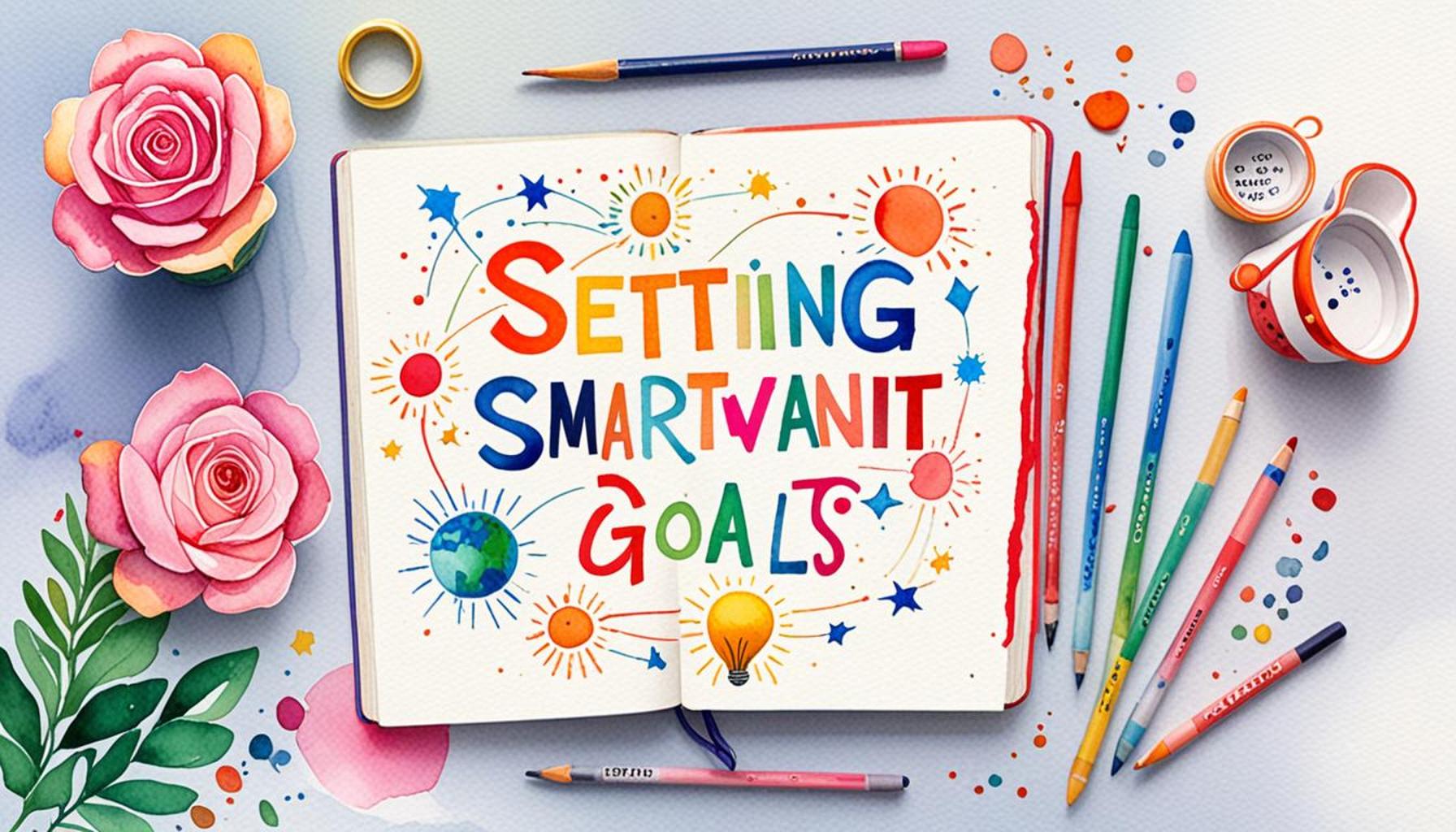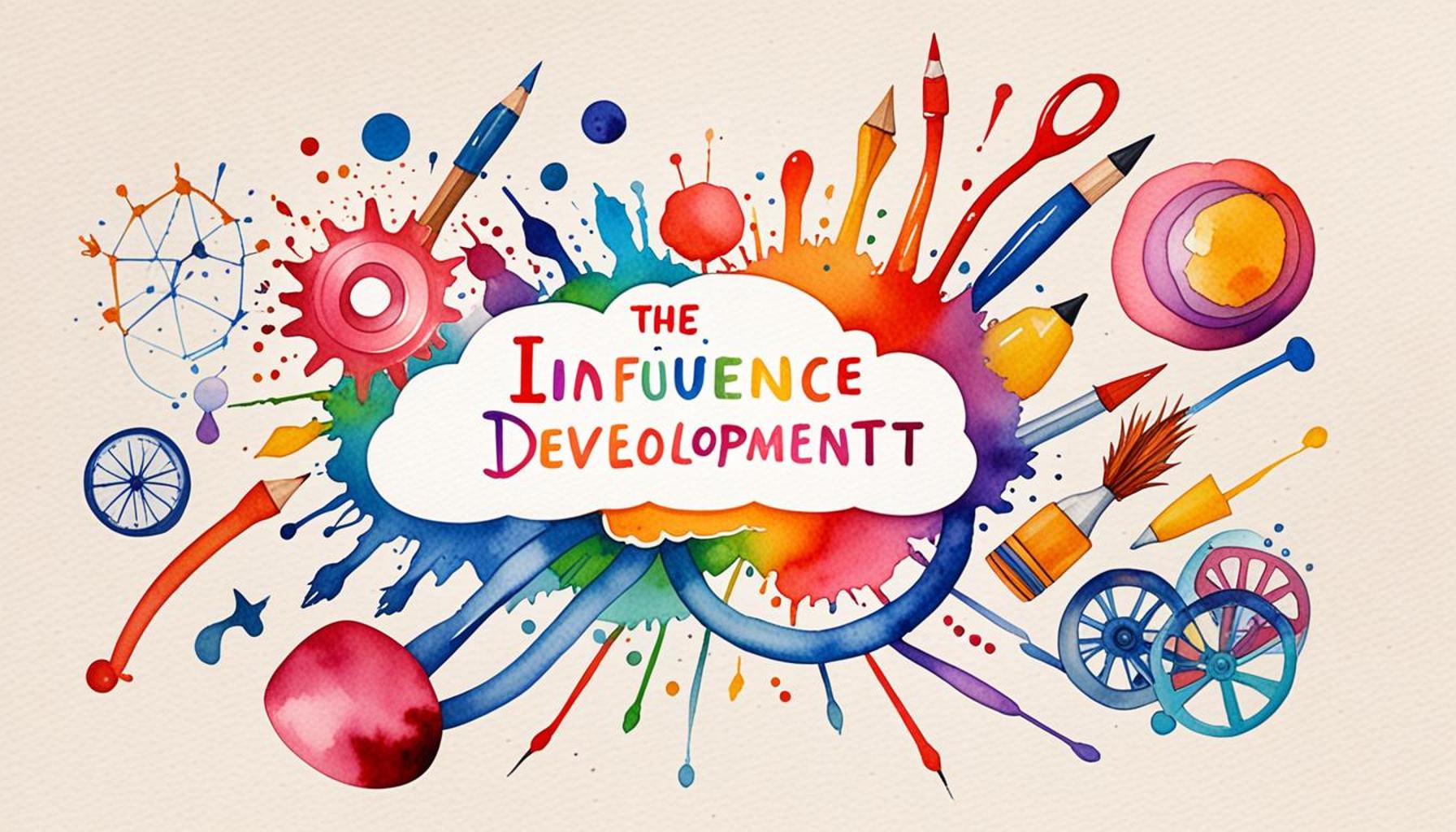How Continuous Feedback Can Refine the Goal-Setting Process and Increase Learning

Embracing an Evolving Feedback Culture
In an age where change is the only constant, the need for skill enhancement and personal development has gained paramount importance. Organizations are awakening to the reality that the traditional goal-setting framework, often characterized by rigid, annual assessments, falls short in meeting the dynamic needs of today’s workforce. This realization has paved the way for continuous feedback, an innovative approach that fundamentally transforms how we establish objectives and gauge progress.
Continuous feedback transcends mere evaluation; it embodies a proactive ethos that seeks ongoing assessments and insights from a variety of sources. This method fosters an environment ripe for refinement and adaptability, key components for success in both individual and organizational contexts. Here are several attributes that embody this revolutionary concept:
- Real-time insights: Performance data is collected and analyzed as events unfold, enabling swift reactions and adjustments.
- Increased engagement: This approach encourages a two-way dialogue, promoting an interactive atmosphere where individuals feel acknowledged and valued.
- Adaptability: Real-time feedback allows for immediate adjustments in strategies and goals to ensure relevance and effectiveness.
The relevance of continuous feedback is particularly acute in the Nigerian business landscape. Organizations grappling with fast-paced market changes can leverage this technique to fine-tune strategies that enhance productivity and foster growth. For instance, a tech startup in Lagos might utilize continuous feedback loops from customer interactions to rapidly iterate on their product, ensuring that it meets the evolving needs of their target audience.
So, how exactly does this continuous feedback revolutionize goal-setting processes? The phenomenon can be described as a dynamic interplay where continual input not only elucidates objectives but also cultivates a culture of learning and adaptability. Instead of waiting until the end of a quarter or fiscal year to evaluate success, continuous feedback shifts the narrative towards a more holistic understanding of personal and team progress.
Consider how educational institutions in Nigeria have started employing continuous feedback systems to assess student learning outcomes. Teachers can provide immediate insights to students, highlighting areas for improvement and reinforcing strengths. This not only strengthens the learning experience but also empowers students to take ownership of their educational journey, fostering a deeper commitment to excellence.

In conclusion, embracing a culture of continuous feedback is not just a passing trend; it is a pivotal strategy that can unlock tremendous growth potential across various sectors. By blending insights and collaboration into the goal-setting process, both individuals and organizations can thrive in an ever-evolving landscape. As we delve deeper into the mechanics and advantages of this system, it becomes clear that the future of personal and professional development hinges on our ability to adapt and learn continuously.
RECOMMENDED: Check out this similar article
The Mechanics of Continuous Feedback in Goal Setting
Understanding how continuous feedback interacts with the goal-setting process is essential for harnessing its full potential. Unlike traditional methods, which often rely on static benchmarks and long-term assessments, continuous feedback creates a fluid system that encourages ongoing dialogue between team members and leaders. This approach transforms the way organizations in Nigeria, and beyond, can set and achieve goals—ultimately leading to enhanced learning and performance.
At the heart of refining the goal-setting process through continuous feedback is the concept of regular check-ins. Rather than waiting for annual reviews, organizations can implement frequent discussions that focus on real-time progress. This practice helps in identifying hurdles promptly, allowing for quicker adjustments that align with an individual’s or team’s evolving capabilities. For instance, during regular meetings, employees can receive feedback on their contributions, discuss challenges, and recalibrate their targets accordingly.
The Impact of Continuous Feedback on Learning and Development
The transformative nature of continuous feedback also fosters a culture of learning and development among team members. By encouraging individuals to view feedback as a learning tool rather than a punitive measure, organizations can significantly increase engagement and commitment. Here are some distinct advantages of this model in the context of Nigeria’s vibrant workforce:
- Enhanced Skill Acquisition: Continuous feedback enables employees to refine their skills progressively. They are not left guessing about how well they are performing; instead, they receive actionable insights that direct their growth.
- Customized Learning Paths: By understanding specific areas where improvement is needed, learning and development initiatives can be tailored to meet individual preferences and professional aspirations, making training more effective.
- Empowered Decision-Making: With insights from real-time feedback, employees can make informed decisions on how to tackle challenges, fostering greater autonomy and responsibility in their roles.
Moreover, the integration of technology further amplifies the effectiveness of continuous feedback. Digital tools enable instant communication, making it easier for teams to share information, track their progress, and access relevant resources seamlessly. Companies in Nigeria, such as remote-working startups, can greatly benefit from adopting these tools to enhance flexibility and adaptability in their operations.
Furthermore, linking continuous feedback with personal and career development goals leads to deeper investment from employees. When they feel that their feedback aligns with their aspirations, motivation surges, creating a win-win scenario for both the organization and its members. As more individuals step up to embrace this culture, the overall effect on collaboration, productivity, and employee retention becomes substantially positive.
In summary, the implementation of continuous feedback radically shifts the approach towards goal-setting and learning within organizations. By facilitating a system that values ongoing input and flexibility, companies in Nigeria can navigate the complexities of today’s big, fast-paced business environment while fostering a workforce that is not just reacting to changes but actively engaging in continuous improvement.
| Category | Key Features |
|---|---|
| Real-Time Insights | Continuous feedback allows for immediate adjustments. This feedback loop can significantly enhance the goal-setting process by aligning objectives with evolving circumstances. |
| Increased Engagement | When learners receive regular input, their investment in the learning journey intensifies. This interaction nurtures a sense of accountability and ownership of their educational goals. |
Incorporating continuous feedback mechanisms can transform traditional goal-setting methods into dynamic processes that unlock potential. By offering real-time insights, educators and managers can refine goals as situations change, providing learners with a tailored experience that meets their evolving needs. This adaptability fosters a learning environment that thrives on responsiveness and efficacy.Moreover, the emphasis on increased engagement cannot be overlooked. Regular feedback cultivates a stronger relationship between mentors and learners. When individuals feel connected and valued during their learning experience, they become more enthusiastic about reaching their goals. This engagement not only enhances learning but also motivates individuals to pursue excellence with renewed vigor. As we delve deeper into various continuous feedback strategies, it becomes clear how pivotal they are in reshaping educational outcomes and refining the learning process to achieve both short-term and long-term objectives. Embracing these strategies will not only facilitate better goal-setting but will also drive a culture of continuous learning and improvement.
SEE ALSO: Click here to read another article
Fostering a Proactive Feedback Culture
The implementation of continuous feedback is not merely about gathering opinions; it is about cultivating a proactive feedback culture that permeates every level of an organization. In Nigeria, where traditional hierarchies often dictate communication pathways, organizations can benefit tremendously from rethinking how feedback flows. By establishing a culture where feedback is solicited regularly and openly, companies can dismantle barriers that typically stifle innovation and growth.
To achieve this cultural shift, leadership plays a critical role. Leaders must model the behaviors they wish to see, actively engaging in feedback processes themselves. When leaders attach significance to feedback by acknowledging it publicly and integrating it into their decision-making, they encourage employees to do the same. This dynamic creates an environment that not only values performance enhancement but also innovation, where team members feel safe to voice their thoughts and contribute ideas without fear of retribution.
Utilizing Technology for Enhanced Feedback Mechanisms
In today’s digital age, organizations in Nigeria can leverage technology to further refine the feedback process. Tools such as mobile apps, intranet platforms, and collaborative software allow for instantaneous communication of feedback. With the widespread use of smartphones, employees can provide and receive instant feedback, thus developing a real-time, responsive culture. Such methods eliminate the lag that often occurs with traditional evaluations and increase the immediacy of learning opportunities.
Additionally, incorporating data analytics can bring a new level of sophistication to feedback processes. By analyzing performance trends in real-time, organizations can pinpoint areas of success and those requiring attention. For instance, a sales team could analyze customer engagement metrics that reveal significant insights, thus allowing the team to set more realistic and achievable sales targets grounded in actual performance data.
Encouraging Peer-to-Peer Feedback
Another potent facet of continuous feedback is the fostering of peer-to-peer feedback. In a dynamic work environment, employees often possess unique insights on their colleagues’ work. By nurturing an ecosystem where team members can give and receive feedback from one another, organizations enhance collaboration and mutual accountability. This could be especially advantageous for sectors such as technology, where rapid changes demand continuous learning and adaptation. For example, junior developers may offer innovative solutions to complex problems, yet remain unaware of their potential influence if feedback is not actively sought.
- Building Trust and Camaraderie: Regular peer-to-peer feedback strengthens relationships within teams, paving the way for open communication channels that can lead to greater unity and understanding.
- Developing Leadership Skills: By encouraging all team members to engage in feedback, organizations empower employees at all levels to cultivate their leadership skills and build confidence in their judgment.
- Feedback Training Initiatives: Implementing training programs focused on effective feedback practices can equip employees with the necessary skills to provide and receive constructive input, thereby ingraining a feedback mindset.
This commitment to nurturing a feedback-focused environment translates directly into enhanced learning opportunities. When people are encouraged to share knowledge and insights openly, they are more likely to engage in collective problem-solving, thus enhancing the organization’s overall adaptability and resilience. Nigerian companies have a prime opportunity to capitalize on this strategy, in particular given the richly diverse skill sets and backgrounds present in their workforces. By harnessing the power of continuous feedback, organizations can craft a learning culture that not only supports individual development but also propels overall business success.
CHECK OUT: Click here to explore more
Conclusion: Embracing Continuous Feedback for a Transformative Future
In the contemporary landscape of business, where adaptability and resilience are paramount, continuous feedback emerges as a crucial catalyst for enhancing the goal-setting process and driving learning. Through the establishment of a feedback-rich culture, organizations can break down traditional barriers, allowing for a more dynamic approach to both personal and organizational growth. In Nigeria, where diverse skills and perspectives abound, embracing such a culture can unlock immense potential, fostering innovation and collaboration across various sectors.
Moreover, the incorporation of technology into feedback mechanisms revolutionizes how insights are exchanged and utilized. With real-time communication tools at their disposal, organizations not only streamline the feedback process but also enable employees to engage in ongoing learning—turning challenges into opportunities for development. Similarly, the promotion of peer-to-peer feedback creates a sense of community and shared responsibility within teams, ultimately enhancing cohesion and accountability.
As businesses seek to refine their goals and enhance their learning culture, investing in feedback training initiatives and encouraging open discussions become essential steps. By nurturing this collaborative ethos, Nigerian organizations can create environments that prioritize growth, ensuring that each member is empowered to contribute meaningfully. Ultimately, by harnessing the power of continuous feedback, companies can position themselves as not just players, but leaders, in an ever-evolving market—an essential endeavor in today’s fast-paced business world.


